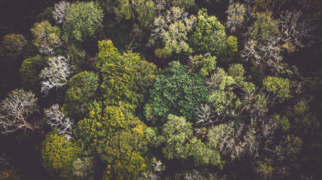The Minjerribah (North Stradbroke Island, Queensland) Township Bushfire Management Plan received a State Community Resilience Award in 2018. The distinction was awarded to our client, Quandamooka Yoolooburrabee Aboriginal Corporation (QYAC), the Traditional Owners of Minjerribah at the Get Ready Queensland Resilient Australia Awards.
Developed by Ventia's specialist environment management consultancy, TenRivers, the Plan was recognised as one of four innovative projects making communities safer and better prepared for natural disasters and emergencies, and was recently credited with stopping a fire from reaching the northern townships of the island in the 2019/20 Summer bushfire season.
Minjerribah, which was subject to native title to the QYAC in 2017 has three townships, Dunwich (Goompe), Amity Point (Pulan Pulan) and Point Lookout, located about 20kms apart and accessible via sealed roads. The Island has a large resident population and is prone to bushfire activity. Sadly, over half the island was burnt in 2014 and again in 2017.
On behalf of Ventia, Ten Rivers supported the QYAC with the development of township fire strategies, focused on the three main township communities on Minjerribah. The work required a detailed on-ground survey of bushfire risk, fire-trail network, verification of local vegetation ecosystems and incorporation of cultural heritage burning to reduce the impact of fire.
In the early stages of procurement, our team liaised with Elders and QYAC management, developing a trusting partnership founded on respect, listening and openly sharing ideas and possibilities. When the contract was in place, we sought permission to visit the land and organised field-verification days, walking through country to scope fire impacts, examine areas that were resilient in previous fires and those that did not respond well to the existing plan. We learned lessons from previous non-Indigenous burning practices and discussed how we could improve the approach.
QYAC hold the old trees on Minjerribah in reverence (believing their ancestors' spirits occupy these trees) and the possibility of losing them to large, high intensity bushfires was heartbreaking. This became the core of our fire management approach on the island - protect the big, old trees, restore the landscape to be fire-ready, and ensure that severe bushfires did not continue to shape the future of the island. We focused on integrating Indigenous knowledge harmoniously with ecological understanding in an adaptive management framework.
The team comprised a number of fire ecologists to determine and verify vegetation ecosystems, GIS spatial data experts to incorporate the on-ground assessments into usable maps and update system metadata, a botanist to identify any potentially rare or listed species, and of course QYAC Elders to determine a suitable approach to land management.
To ensure burns were responsive to environmental conditions rather than set by a timeframe, cultural burning practices remained nimble and flexible during implementation. Burning a couple of days after rain with good soil moisture content helped ensure a low intensity, mosaic burn with no detrimental impact on ecologically and culturally significant trees, vegetation or wildlife.
The strategy worked as it connected bushfire mitigation works, to meaningful on-ground outcomes (such as new firebreaks or planned burning in specific locations), with the risk profile in mind (measuring the amount of available fuel for use in fire behaviour simulations) to result in a prioritised list of actions for implementation by QYAC.
The Minjerribah BMP is a three-year plan that will be reviewed and updated annually to incorporate lessons learned during the previous fire season.
